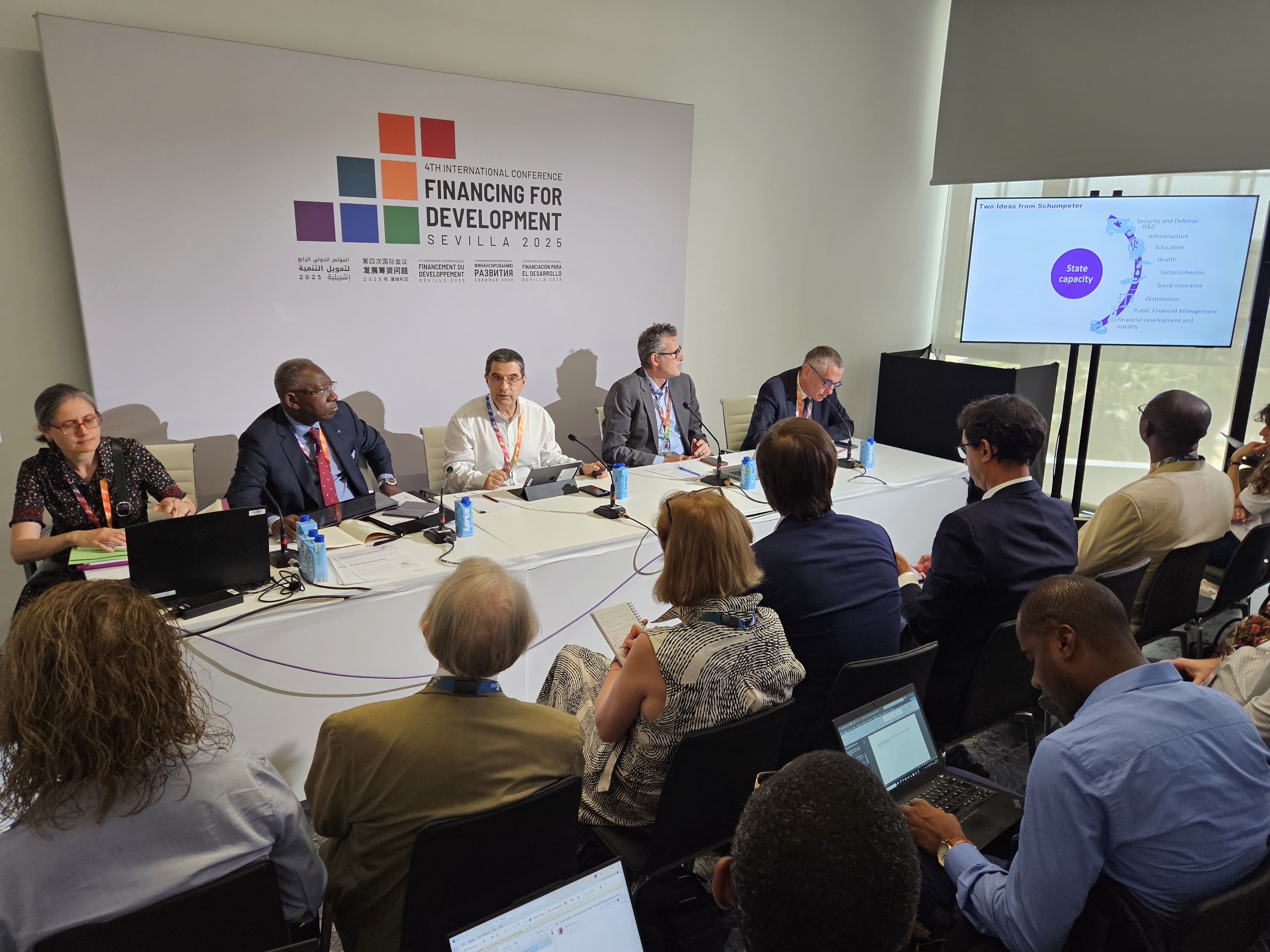





Date: Wednesday 2 July 2025
Time: 12:30 pm-2:00 pm
Venue: FIBES Sevilla Exhibition and Conference Centre – Side Event Room 8
Format: In-person
Organizers: FERDI & WAEMU

By dissecting the policy and compliance gaps (the revenue losses stemming from policy choices and taxpayer non-compliance respectively), this session will highlight how tax gap assessments can illuminate untapped revenue potential, guide strategic reform priorities, and build greater transparency and public trust in national tax systems.
Bringing together senior policymakers, international experts, and leading researchers, the discussion will explore:
Through a high-level panel and interactive dialogue, participants will gain practical insights into harnessing tax gap analysis to advance DRM and accelerate progress towards the Sustainable Development Goals (SDGs).
In a global context marked by persistent economic challenges, sovereign debt crises, and widening inequalities, domestic resource mobilization (DRM) is more critical than ever. It serves as a cornerstone for achieving long-term, self-sustaining development in the Global South. However, following a period of sustained growth, tax revenue mobilization has stagnated in many developing countries, particularly where tax revenues account for less than 15% of GDP, a threshold widely considered as critical for enabling inclusive and sustained economic growth.
To unlock untapped fiscal potential, governments can consider comprehensive reforms, including broadening the tax base and improving tax administration. A key prerequisite to such reforms is the rigorous analysis of tax gaps, that are the difference between the tax revenues that should be collected under full compliance with existing laws and the revenues actually collected.
Tax gap analysis is typically broken down into two components:
As a diagnostic tool, tax gap analysis provides critical insights into the strengths and weaknesses of national tax systems. It allows governments to quantify the extent of revenue losses, identify where the gaps are most pronounced, whether by tax type, sector, or taxpayer group, and implement targeted policy and administrative responses. Over time, such analysis can also be used to assess the effectiveness of tax reforms and enhance transparency, accountability, and public trust in the fiscal system. While technically complex and methodologically challenging, measuring tax gaps remains essential for advancing DRM and achieving the broader goals of the financing for development agenda.
Moderation
↪ Bruno CABRILLAC, Managing Director, FERDI
Panel discussion
↪ Vítor GASPAR, Director of the Fiscal Affairs Department, International Monetary Fund (IMF)
↪ Jean TCHOFFO, Secretary General of the Ministry of the Economy, Planning and Regional Development, Cameroon
↪ Shanti BOBIN, Deputy Director in charge of Multilateral Financial Affairs and Development (Multifin), French Treasury
↪ Grégoire ROTA-GRAZIOSI, Co-head of FERDI's Taxation for Sustainable Development programme, Professor of Economics, Université Clermont Auvergne, CERDI